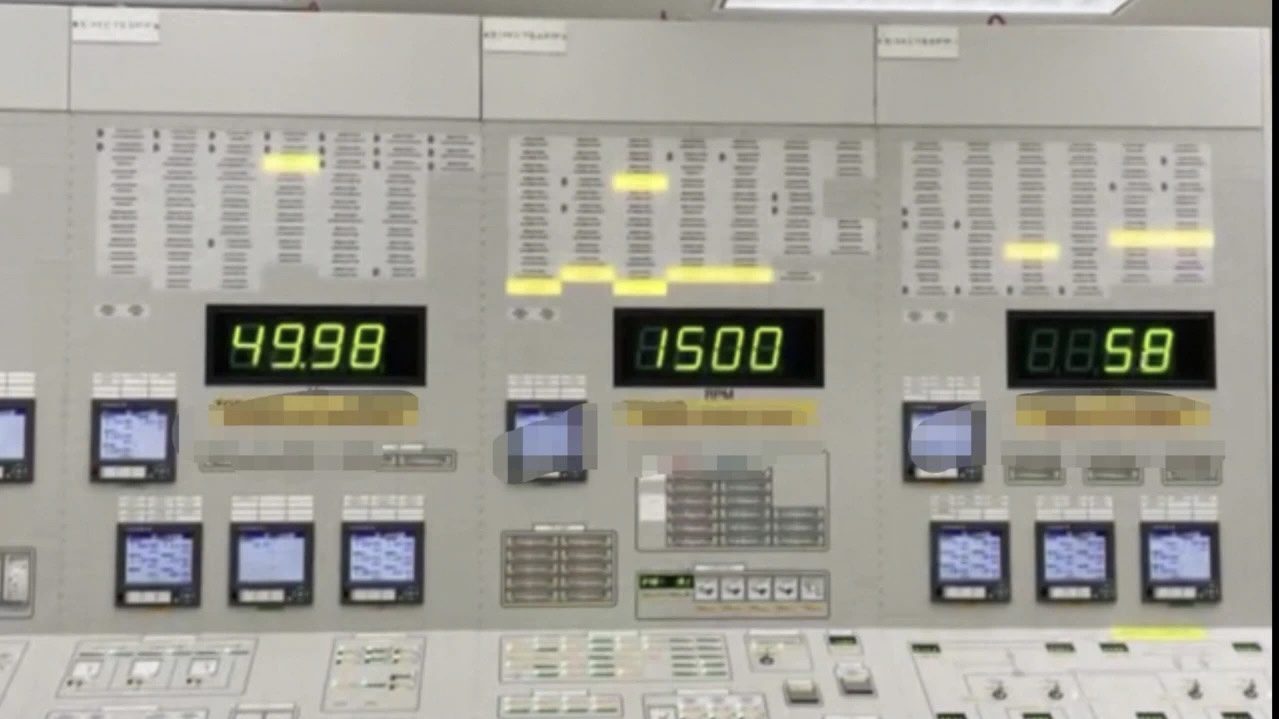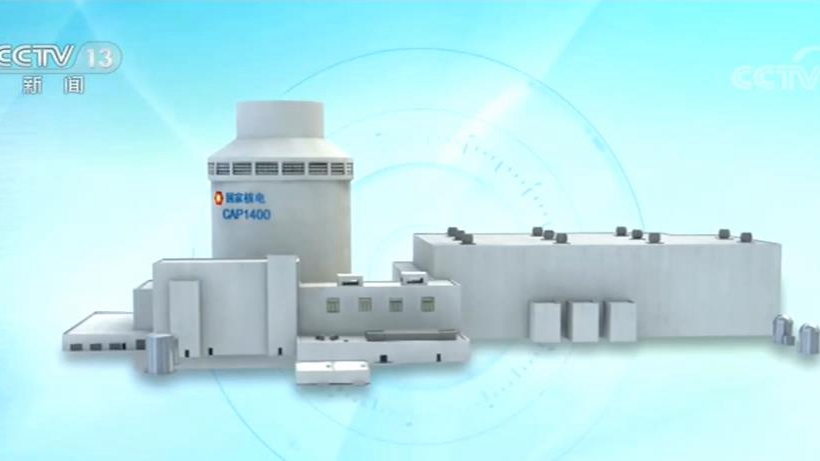China has the most number of nuclear power plants in the world under construction, according to an industry report released by China Nuclear Energy Association (NEA) on Wednesday.
"China is building 17 new nuclear power plants as of the end of 2020," said Zhang Tingke, head of the association. "And the estimated capacity is 18.53 million kilowatts."
During China's 13th Five-Year Plan period from 2016 to 2020, the country built 20 new nuclear power generators with a total capacity of 23.44 million kilowatts, the report said.
Domestic technology is playing a bigger role in the industry landscape, with the Hualong-1 model entering mass manufacturing and Guohe-1 model starting construction, said the report.
"Our country has fully managed the core technology of nuclear power generation," Zhang told China Media Group (CMG). "As much as 88 percent of China's third-generation nuclear power technology are domestically developed."
Electricity generated with nuclear technology increased 5.02 percent in 2020 compared to 2019. And 4.94 percent of the total electricity generated in 2020 is from nuclear plants, the report said.
By the end of last December, the Chinese mainland had a total of 48 commercial nuclear power generating units, with a total of installed capacity of 49.88 million kilowatts, ranking third in the world after the U.S. and France. Also, 28 generating units have reached full marks in the World Association of Nuclear Operators (WANO) composite index, accounting for one-third of the total full marked nuclear power generating units globally.
Highlights of technological breakthroughs
- Hualong One

The No.5 unit of China's Fuqing Nuclear Power Plant using Hualong One technology in operation. /CNNC
The No.5 unit of China's Fuqing Nuclear Power Plant using Hualong One technology in operation. /CNNC
China's first nuclear power unit using Hualong One technology, a domestically developed third-generation reactor design, started commercial operation on January 30, according to a statement released by the China National Nuclear Corporation (CNNC).
The commercial operation of the reactor in Fuqing, southeast China's Fujian Province, signified that China has become the fourth country in the world to own independent third-generation nuclear power technology, after the U.S., France and Russia, CNNC said.
The Hualong One technology, jointly developed by CNNC and China General Nuclear Power Corporation (CGN), has more than 700 patents and 120 software copyrights. Eighty-eight percent of its equipment was made domestically, including all core equipment, suggesting mass production capability, said CNNC.
"Hualong One's core components have been granted complete independent intellectual property rights, including the reactor's pressure vessel, vapor generator, voltage stabilizer and main pipes," said Xing Ji, chief designer of the Hualong One reactor. The Fuqing reactor has a designed lifespan of 60 years. There are 177 reactor cores functioning for 18 months until the next refueling.
Each unit has a 1.16-million-kilowatt generating capacity for about 10 billion kilowatts per hour electricity per year, meeting the annual demand of a medium-level developed country with a population of one million. It's estimated that it can save 3.12 million tonnes of standard coal, cutting back 8.16 million tonnes of carbon dioxide every year.
The Hualong One reactor adopts both active and passive safety measures to prevent and contain potential accidents. It also has a double-layer shell, which can withstand an earthquake of 9.0 magnitude and even an air crash.
"Drawing experiences from other countries and the lessons of the Fukushima nuclear accident, the unit has adopted the highest standards of third-generation nuclear power technology," said Yu Jianfeng, CNNC chairman, "the power unit was made possible thanks to China's more than 30 years of nuclear power research, design, manufacturing, construction and operation experiences," he said.
Construction of the Fuqing reactor began in May 2015, involving more than 5,300 Chinese firms and over 200,000 engineers and workers in the project.
Last September, the reactor's fuel-loading was completed, and in November, it was successfully connected to China's power grid. So far, six Hualong One units are under construction in China and other parts of the world, and all are in good condition, according to CNNC.
Despite its controversies, nuclear power is still a very important energy source for many countries and an option for clean energy as long as its safety is ensured, and as the designers of Hualong One have said, with new technologies and safety measures, nuclear power could become a regularly used source of reliable energy.
- Guohe One

A demonstration model of China's CAP1400 nuclear reactor. /CMG
A demonstration model of China's CAP1400 nuclear reactor. /CMG
China completed research and development on third-generation nuclear power technology called CAP1400 (Guohe One) in September 2020, according to an announcement by State Power Investment Corporation (SPIC).
It's the latest achievement in China's nuclear power technology development and industrial innovation.
Based on the third-generation nuclear technology AP1000, CAP1400 is China's second independent third-generation nuclear power technology, along with Hualong One.
It features a high safety coefficient, sound economic performance and multiple innovations. China started the project in 2008. After 12 years efforts including over 26,000 technological progress, CAP1400 is an example of technological innovations, promoting the overall upgrading of the country's nuclear power industry and technology.
Some 90 percent of CAP1400's equipment is domestically made, with all its key parts and materials including the main pump being domestically designed and produced, said Zheng Mingguang, chief designer of CAP1400 nuclear reactors.
CAP1400 has broken overseas technology monopolies in many areas and owns independent intellectual property and export rights, said Lu Hongzao, assistant general manager of SPIC.
It will be a powerful provider of electricity. "For example, it can provide 1.5 million kilowatt-hours of electricity to the grid. So basically it can provide nearly 13 billion kilowatts per hour annually."
With a design life of 60 years, the CAP1400 nuclear reactor improves safety performance against natural disasters including earthquakes and floods by 100 times, compared with the second-generation version.
The annual generating capacity of a single CAP1400 unit can meet the electricity needs of over 22 million residents and reduce greenhouse gas emissions such as carbon dioxide by more than 9 million tonnes per year.
It is estimated that by 2025, China's installed nuclear power capacity in operation will reach 70 million kilowatts, with 30 million kilowatts already under construction.
(Cover photo via CNNC)

